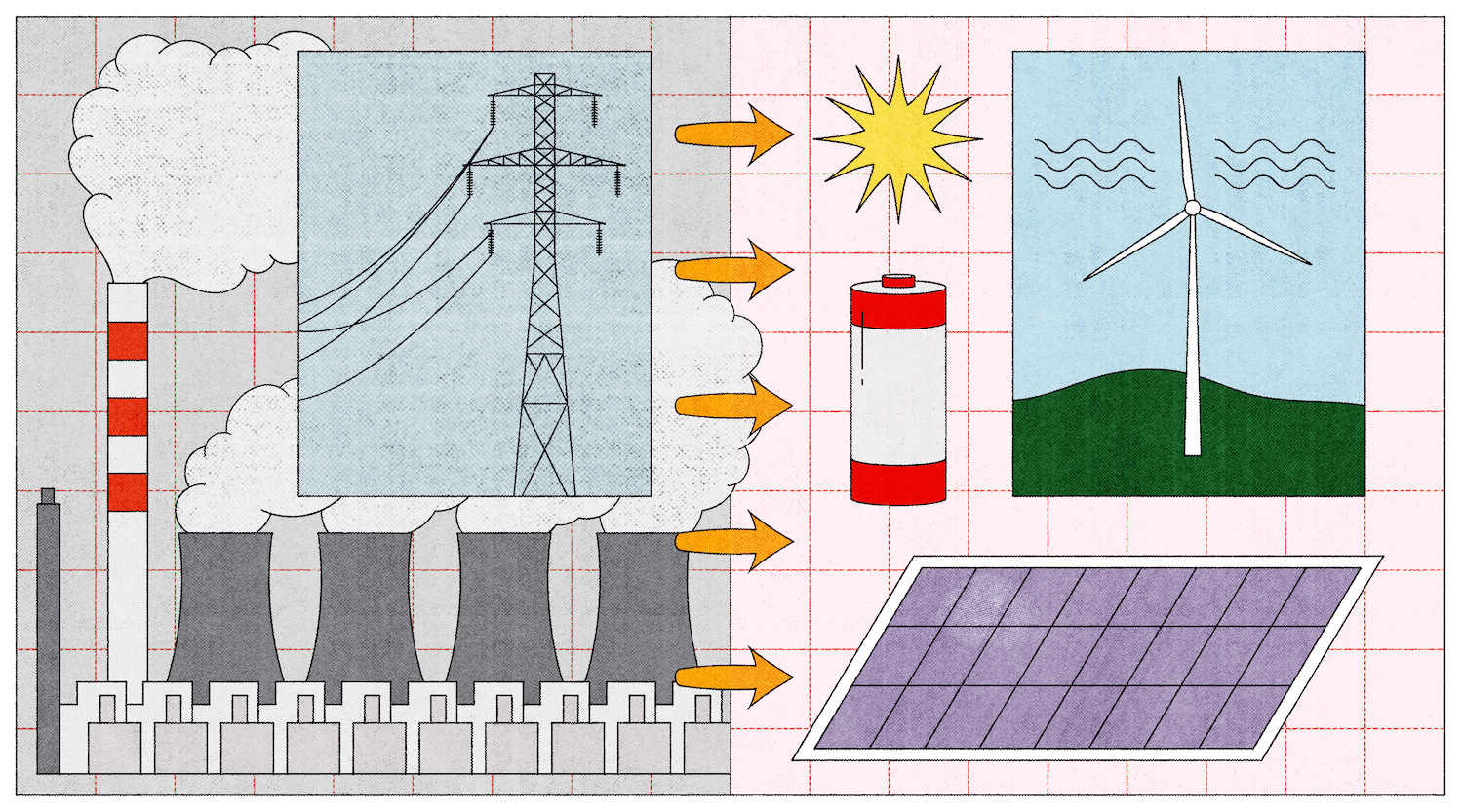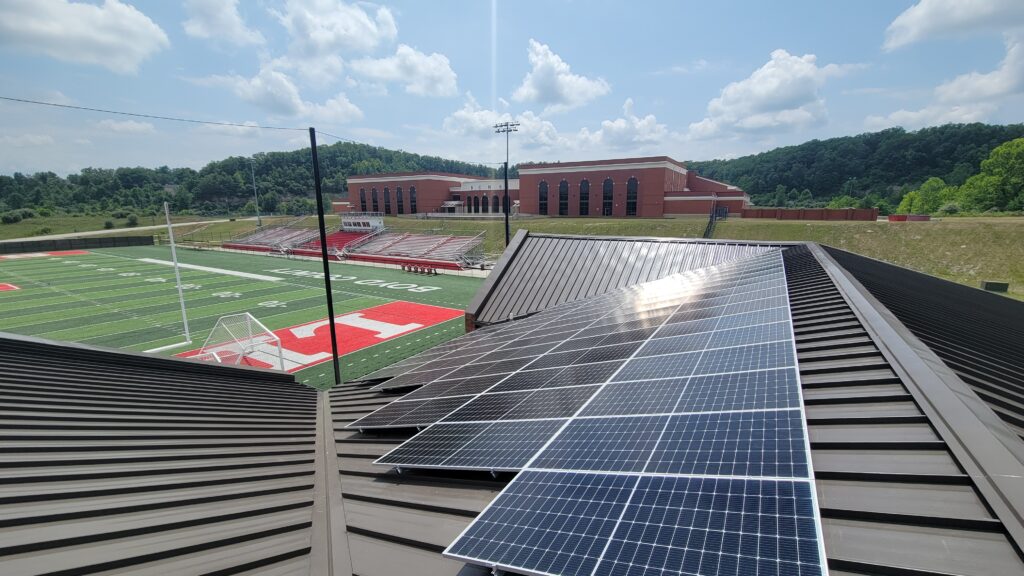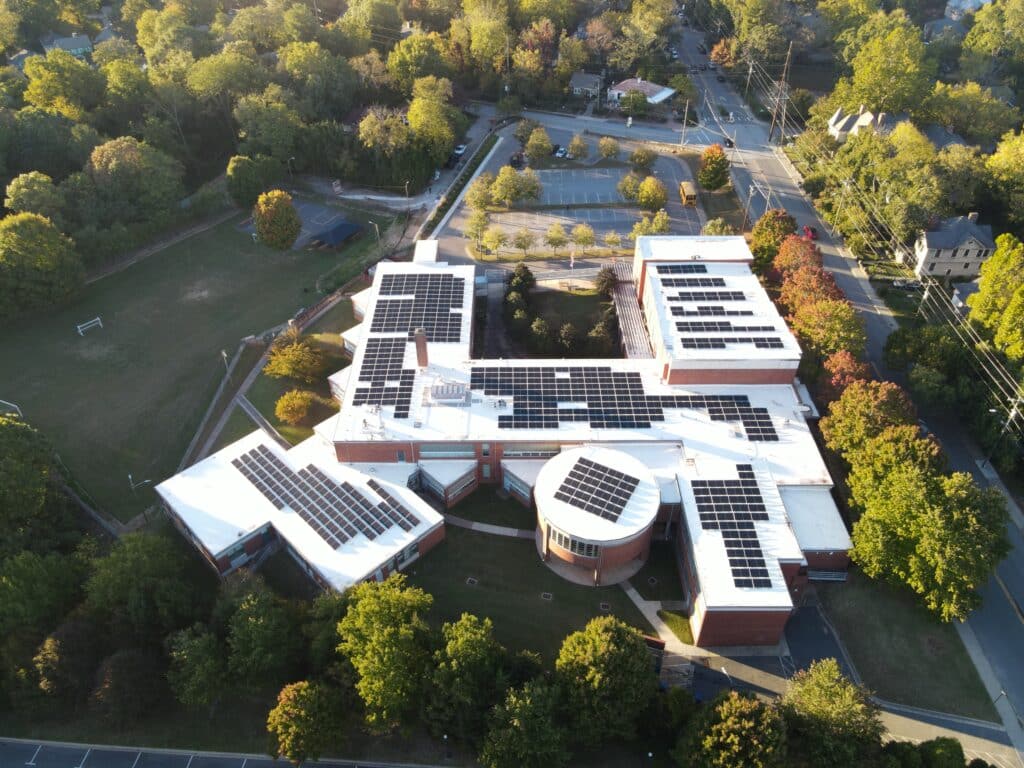You might not think about what it takes to bring power, 24/7, to your home, but the end result is pretty amazing. To get the juice we need to run an appliance or device, any time of the day, we just plug it into an outlet or flip the switch and…voila… instant electricity! But the current power system faces major challenges, especially when clean energy sources like wind and solar enter the mix. It’s overdue for an overhaul. Fortunately, there are solid ideas for how to do this—if we can get our act together.
How it works and where it’s headed
Unless you’ve installed rooftop solar, the way your home is powered probably hasn’t changed much since it was first built. For nearly a century, large power plants (typically fired by fossil fuels like coal or natural gas) have generated most of the country’s electricity, which then travels, via the “transmission system,” over long distances along high-voltage wires. Once it hits the network of substations, this power enters the “distribution system” and is progressively transformed to lower voltage and carried over local lines to homes and businesses. Along the way, key players—from baseload power plants and specialized back-up plants to system operators to local utilities—perform a “perfectly synchronized dance” to ensure that supply matches demand, at the right time and with the optimal mix of resources.
This model was well and good until we discovered that generating electricity from fossil fuels releases harmful greenhouse gases, which are slowly wreaking havoc on our climate. Electricity itself isn’t the culprit though, and is actually an important part of the solution as we shift to a low-carbon world. By “electrifying everything”—from how we get around to how we heat our homes—and then powering it with clean energy, we can more rapidly wean ourselves from our fossil fuel addiction. The keys to decarbonizing the energy system are clean energy and energy efficiency, in combination with increased electrification.
Evidence of the energy transition is growing every day. The explosion in cost-competitive clean energy technologies like wind and solar has expanded our options for getting zero-emission power. Emerging technologies like electric vehicles, home batteries, and smart meters—known broadly as “distributed energy resources”—are making it possible to generate, store, and/or manage power at a local scale, as opposed to relying on a distant, centralized location. Combined with advances in information and communications technology, the opportunities seem limitless: from using your electric vehicle battery to store energy to power your home, to networking small-scale solar generators into a “virtual power plant.”
The grid is… so last century
But this exciting future—which seems to be arriving at warp speed—isn’t a great fit with the current grid structure (and that’s a big understatement). Our existing power system was designed to accommodate the technologies and goals of the fossil fuel era, and the grid was built toward a single end: to support the one-way flow of power from a centralized power plant to consumers. Power markets, in turn, are designed to optimize the buying and selling of “dispatchable” fossil fuels like coal and gas, which can be ramped up or down as needed to harness power from afar at a moment’s notice.
In contrast, clean energy sources like solar and wind are not easily dispatched, because the sun doesn’t always shine and the wind doesn’t always blow. To ensure a reliable electricity supply based on these variable energy sources, the power system needs additional flexibility to fill in any gaps in coverage. Typically, coal and gas plants have provided these services, but they aren’t compatible with a climate-constrained future. That’s where emerging distributed solutions like battery storage, demand-side management, and smart charging of electric vehicles could swoop in, complemented by game-changing digital technologies that can efficiently monitor and manage system operations in real time.
Wind and solar power have low operating costs, which is a plus for many reasons, including making electricity more affordable and increasing “energy democracy.” But here, too, there’s a poor fit with the existing power system. Today’s grid is designed to support (and enrich) a handful of big players, including the transmission system operators that oversee the dispatching of electricity and compete to supply it on the wholesale market, and the more localized “distribution system operators,” typically the utilities we pay to deliver power to our homes. As low-cost clean energy enters the mix, it messes with this finely tuned market, causing wholesale power prices to drop and introducing costing and valuation challenges. As a result, the big energy players, including regulators, have been reluctant to grant small-scale energy producers (like rooftop solar) access to lucrative wholesale markets.
A decision point and a better way
Rather than forcing a square peg into a round hole by trying to tweak our misaligned power system, we have an opportunity to take a holistic (systems) approach to reshaping it, focusing on more optimal ways to provide affordable, reliable, and clean energy for all. Fortunately, there are many good proposals for designing a decentralized electricity system that works for clean energy resources and the planet. Most solutions involve flipping the power system on its head and rebuilding it from the bottom up. This means shifting from a top-down system that’s supply-led to one that’s demand-led. The average person goes from being a passive consumer of electricity to being able to play a lead role in its production and distribution.
Energy writer David Roberts has described what he calls a “layered grid architecture,” in which most of the real action in electricity—its generation, sale, and delivery—would happen at the local (distribution) level, rather than at the transmission level, like it does today. In this decentralized approach, each “layer” of the distribution system (for example, a campus-based mini-grid or a household solar array) is essentially its own separate entity, responsible for finding the optimal balance between supply and demand and ensuring reliability of supply. Only if there is extra (unused) power would this then be fed into the grid and the wider transmission system, aggregated and sold on the wholesale market.
In this model, a customer seeking power might first tap into a hyper-local source (like rooftop solar or an electric vehicle battery), to ensure optimal electricity supply and self-sufficiency. But if that supply wasn’t enough, the system would cast a wider net to higher layers of producers (community solar farms, micro-grids, etc.) until, as a last resort, power might need to be purchased from the top-most layer (the transmission grid and big power plants). This way, the customer would be ensured reliable back-up power in case local sources weren’t available, but the transmission grid wouldn’t be the go-to power source. Prioritizing local sources would bring added benefits to the local economy, job creation, and overall decarbonization efforts, and would allow for scalability, citizen empowerment, and innovation.
Getting there
Importantly, designing the power system from the bottom up would address one of the biggest myths about the clean energy transition: that variable renewables like wind and solar aren’t reliable enough to provide the power we need, 24/7. In the layered approach Roberts describes, we would never be faced with the black-and-white choice of relying either on big power plants or on small, self-sufficient local production. Instead, the power system structure would have many shades of gray, with the appropriate mix of centralized and distributed assets and a wide range of actors on both the supply and demand sides to provide clean energy and the flexibility required to deliver power where and when it’s needed.
The decentralized, layered solution is practical, economical, and equitable. That’s also why it might be difficult to achieve in the time frame that’s needed. It requires big changes not just in the grid infrastructure, but also in regulatory and legal structures. It entails radical shifts in control and oversight and a possibly rapid “stranding” of fossil fuel assets, from polluting power plants to gas-powered cars. Already, utilities, regulators, and other actors that could lose out from the energy transition are throwing up roadblocks that make it hard for distributed energy resources to enter the power market. That’s why it’s important for these key stakeholders to get ahead of the curve, so they can identify new roles to play in the emerging (and inevitable) localized markets for power distribution and related services. They have an opportunity to collaborate with the different new actors that are developing and managing distributed energy resources, from back-up storage to electric vehicle fleets. Ultimately we’d all be better off under a revamped, decentralized power structure: with a more resilient and reliable energy supply, stronger local economies and communities, and a more climate-friendly energy system. All told, this will enable us to catapult from the dinosaur age to the clean energy era we need.















